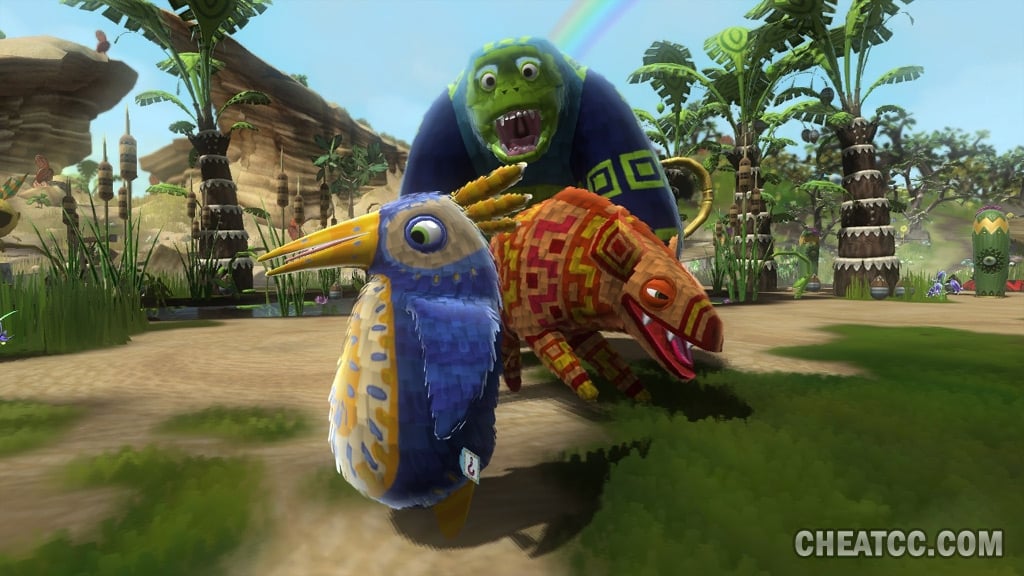
Ruffians, and bigger baddies Dastardos and Professor Pester are another matter entirely. With money earned through selling unwanted piñatas and garden produce you can block various sours from entering, which makes your life a lot easier. You’ll have to batter them with your spade and break up all dropped candy as quickly as possible in order to prevent a visit from the doctor.
#Viva pinata trouble in paradise online full
Sours are evil piñatas full of bad candy – candy which is harmful to other piñatas if eaten. The nasties come in the shape of red enemies known as sours and ruffians. You can even buy accessories and toys for your loveable piñata friends – who doesn’t want to see a Lickatoad in a bowler hat? Level upgrades earn you new items available to buy from the store, new helpers to hire, new seeds to plant, new equipment to buy and loads of other stuff. Achieving new things in the game awards you with petals, with a certain amount of petals earning you a level upgrade. You’re not entirely alone in your quest to become the ultimate gardener, with a whole host of helpers (many familiar faces from the original game) cropping up as you progress. Once you start you’re in a state of constant upkeep and renovation, digging, planting and watering non-stop. Depending on what you’re trying to attract you’ll need to dig ponds, lay new surfaces (grass, long grass, sand and snow are all options eventually), grow certain plants or plant bushes and trees for fruit. If only everyone was so easy to please.Ī whirlm population will bring in new visitors, and from here you start the whole pleasing-process again, shaping your garden to their needs while also trying not to upset your existing residents. Whirlms of course are simple creatures, so just need a house and dirt. All piñatas need a house to romance in, but usually also a bunch of other requirements, from the type of objects in the garden to the food they’ve eaten. These need to be met before your piñatas do a little dance and start breeding.

The final requirements are for romancing.

Luckily the requirement for a visit and residency is exactly the same, so it won’t take long for a whole load of whirlms to turn up. Whirlms need dirt, so as long as you’ve got 10 square pinometers of soil or grass in your garden they’ll turn up. Whirlms are the most basic example, but the same principles apply across the board, albeit at a much more complicated level. This all starts with the humble worm, or in piñata land, the whirlm.Īll piñatas in Trouble in Paradise have certain garden requirements before they’ll appear, visit and become residents. Your goal, as in the original, is to spruce up the garden and attract as many different piñata species as possible. It’s not pretty and isn’t attracting many visitors. These are your primary tools for landscaping your garden into a piñata paradise – a garden that starts off looking just a small step above what you might expect to find should you return home after a trip around the world. Once again you start with a simple spade, a watering can and some grass seed. The sense of deja vu is impossible to shake. That’s not to say that Rare hasn’t managed to make this another must-own title.

This was never going to be Viva Piñata: Piñatas invade New York City, and as such is going to feel extremely familiar to anyone who sunk considerable time into the original. The whole premise of Viva Piñata is the garden, which is where piñatas live, where you plant seeds, grow plants and decorate. Being a sim, Rare couldn’t simply build some new levels and a few new enemies and have a sequel. Although the original game had a few problems, the core idea and gameplay was near-perfect, making for one of the Xbox 360’s best games. As much as we were hugely looking forward to Rare’s Viva Piñata follow-up, Trouble in Paradise, there was always the feeling that the dev team would struggle to make a true sequel.


 0 kommentar(er)
0 kommentar(er)
